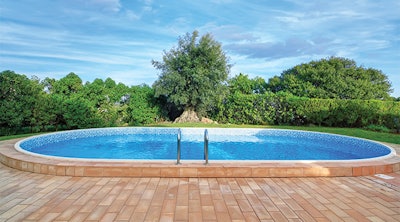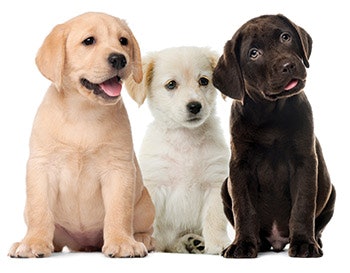

I am a dog lover. I have owned many dogs throughout my life. One thing I've learned is there are good dogs and bad dogs. The main difference between what makes a dog good or bad is how they began life as a puppy.
Some dog breeds are easier to train than others. I once owned a beagle and trust me, Caesar Milan could not have trained that dog. I also had a yellow lab who was very easy to manage and train. What was the difference? The way they started out.
The reason for this dog analogy is because in many cases pools are like dogs and how good or bad the pool is can depend on how the pool was managed from the beginning. Right from the start, questions need to be asked and understood. For instance, what is the pool surface and the best way to treat that type of surface? A vinyl or fiberglass pool should be managed differently than a plaster pool.
The care and feeding of the pool is important as well, so knowing the source water is important. Is the fill water soft or hard? What is the starting level total dissolved solids (TDS)? Is it well water or municipal water treated with chloramines? Of vital importance in making sure your puppy pool will grow up to be a good pool is knowing the Langelier Saturation Index (LSI) of the start-up water and adjusting it accordingly, right from the get-go.
A good pool with a proper LSI tilts slightly towards the plus or basic side. Here are some ideal levels to give you an idea of what a good pool should look like:
Cl: 1-4 ppm
pH: 7.5
Total Alkalinity: 90 ppm
Calcium Hardness: (Plaster) 350 ppm (Vinyl, Fiberglass) 250 ppm
Cyanuric Acid (CYA): 30-50 ppm TDS: No higher than 1500 ppm over the start-up TDS
LSI: + 0.3 to no lower than – 0.3
If you have a pool that is in these ideal levels, then you have a good pool. It is also important to consider some of the physical parameters, such as good circulation, flow and filtration. Good surface water movement is important because 75% of contaminants are at the surface. Healthy water is water that moves.

GOOD POOL TO BAD POOL
Dogs are heavily influenced by their environment, just like pools. If every pool existed in a bubble, then they would be good all the time. However, the majority of pools are open systems that are subject to the environment and just about every possible scenario of contamination.
Wind, rain, fires and sunshine are just a few of the onslaughts that can quickly turn a good pool to bad. Wind can blow organic contaminants, such as leaves, branches and grasses, into the pool that will consume the chlorine quickly.
RELATED: Underwater Dogs
Rain washes in pollutants from the environment like sulfuric and nitric acid that can lower the pH. High nitrate levels from storms can cause a greater chlorine demand because they act as a nutrient for algae growth. If fertilizer gets washed into the pool, it will contribute both nitrate and phosphate which are prime nutrients for algae growth.
Wildfires can contribute heavy amounts of smoke and ash into pool water, which can be corrosive and affect the water chemistry, specifically the pH. Some ash is very alkaline, and both smoke and ash can contain toxins that can cause corrosion of surfaces and have a negative effect on water. Maintaining a good pool is literally a balancing game which not only incorporates the water itself, but the surrounding environment, the weather and the users.
I am convinced that most pools would stay nearly perfect if it was not for one thing: People get in them. Clean and pure as we might think we are, every human contributes millions of bacteria and waste to the pool when they take a plunge. Every hour, the average swimmer contributes to the pool 2 pints of perspiration, which contains urea. Urea from perspiration or directly from urine combines with chlorine in pool water and forms tri- chloramine or trihalomethane, and can lead to an immediate lowering of free chlorine and an increase of irritating chloramines.
Add to that body oils, hair and skin follicles, deodorants, lotions and soap residue, and you have a real concoction of contaminants. And since I started this off with a canine analogy, one dog in the pool is equal to the contamination of 50 people. If you are curious as to what the contamination of one person brings, consider the following information:
- 5 million organisms are shed with every hand washing.
- 38,000 microorganisms are released with a "clearing" of the nose.
- 100 million to 1 billion organisms are contained in one spit of saliva.
- On the average clean, showered person there remains one tenth of a gram of fecal material.
Multiply all of the above by 50, and you have the level of canine contamination. You may want to keep Fido out of the pool. It is plain to see, as well, that a pool with a large amount of swimmers can turn from good to bad really fast.
This is the main reason water needs to be managed with chlorine. Chlorinating compounds have the ability to quickly inactivate most bacteria and viruses. Here are some example kill rates with chlorine at 1 ppm and a pH of 7.5 with no cyanuric acid (CYA):
E. coliO157:H7: Less than 1 minute Hepatitis A (Virus): 16 minutes Giardia (Parasite): 45 minutes Cryptosporidium (Parasite): 15,300 minutes (10.6 days)
Based on these examples, it is clear to see that differing germs require different contact times to be inactivated. Also, these times do not account for how any level of CYA will reduce the effectiveness of the chlorine killing agent. In short, with any level of CYA it will take more chlorine and more contact time to effectively kill bacteria and algae. According to a report by the Centers for Disease Control (CDC), it takes over twice as long for chlorine to inactivate the parasite cryptosporidium (crypto) with a minimum of 15 ppm of CYA.
For example, at 20 ppm of chlorine with zero ppm CYA, crypto is inactivated in 12.5 hours. At 15 ppm CYA, it takes 28 hours.
One of the great benefits of chlorine is that when properly dosed, it has the ability to leave a measurable residual in the water. This is to deal with any pathogenic (disease causing) microorganism that may enter the pool. Keeping a steady residual at all times is vital to keep a pool from going bad.
Without this residual, bacteria can double in population within 15 to 60 minutes, and algae can double in population in 3 to 8 hours. The increase of bacteria and algae will also lead to a higher chlorine demand, meaning it will take a lot of chlorine to deal with a pool that has turned bad. This explains why it can take several gallons of liquid chlorine before a measurable residual can be obtained again after treating a swamp green pool.
REACTIVE VS. PROACTIVE
A good dog owner adjusts to changing conditions, and it's the same for pools. Some techs set their pools at the exact same chlorine levels in every season, but it is proven that pools use up chlorine faster or slower depending on conditions. For instance, a pool will lose 1 ppm of chlorine on a sunny day. Throw into that leaves, grass, swimmers, animals, etc., and you can lose 2 to 3 ppm of chlorine a day.
RELATED: Swimming Pools: Gone to the Dogs
The EPA requirement for chlorine in public pools is 2 to 4 ppm. So if a pool tech adds enough chlorine to reach a level of 4 ppm, it may not be enough based on what could occur during the week. This is why in the pool industry we must be proactive in our chemical treatments instead
of reactive. This means testing and keeping CYA levels no higher than 50 ppm; planning ahead for swim parties and severe weather; super-chlorinating at least twice a month during the swim season; and keeping the water balance at the ideal recommended levels.
Most importantly, water must be refreshed from time to time. High TDS can reduce the effectiveness of chlorine by up to 50%. The proactive treatment of shocking and specialty chemicals can go a long way towards preventing the pool from getting rebellious. Two vital specialty products are phosphate removal and clarifier. Keeping phosphates lower helps to reduce the ability of algae to bloom at normal chlorine levels. Clarifiers help to remove micron-sized particulates that can consume chlorine in oxidation. If the majority of the chlorine you add gets consumed in oxidation, then there will not be enough left to sanitize, and then bacteria and algae can reproduce and take over.
BRINGING THE PRODIGAL POOL TO HEEL
What can be done when the pool turns ferocious? How do you deal with a pool that refuses to behave? Fear not, water takes a little training, and it can be turned back from bad to good. The first step in this is to determine if the water needs to be refreshed. If the water is old and tired with a very high TDS, it could be best to drain and dilute some or all of the pool. After all, everyone knows you can't teach an old dog new tricks. It's much easier to start fresh.
Sometimes, the pool may just need a partial drain to turn things around. Next, bring the balance to the ideal levels as shown on page 68. Hyper-chlorinate the pool by adding 4 gallons of liquid sodium hypochlorite per 10,000 gallons. This treatment will effectively inactivate any bacteria and algae in the pool without adding any CYA.
Let the pool come down to between 2 to 4 ppm. Add a phosphate remover and a good clarifier. Make sure that the pump is set to run at least 3,000 rpm for 6 hours a day, especially during the summer months. The pool should be super-chlorinated once a month in the off season and at least twice a month in the summer, with 2 gallons sodium hypochlorite per 10,000 gallons. These steps will turn a bad pool into a good one again. And the procedures outlined above will keep him on his best behavior. That's a good dog. Good doggie.
This article first appeared in the April 2021 issue of AQUA Magazine — the top resource for retailers, builders and service pros in the pool and spa industry. Subscriptions to the print magazine are free to all industry professionals. Click here to subscribe.












































